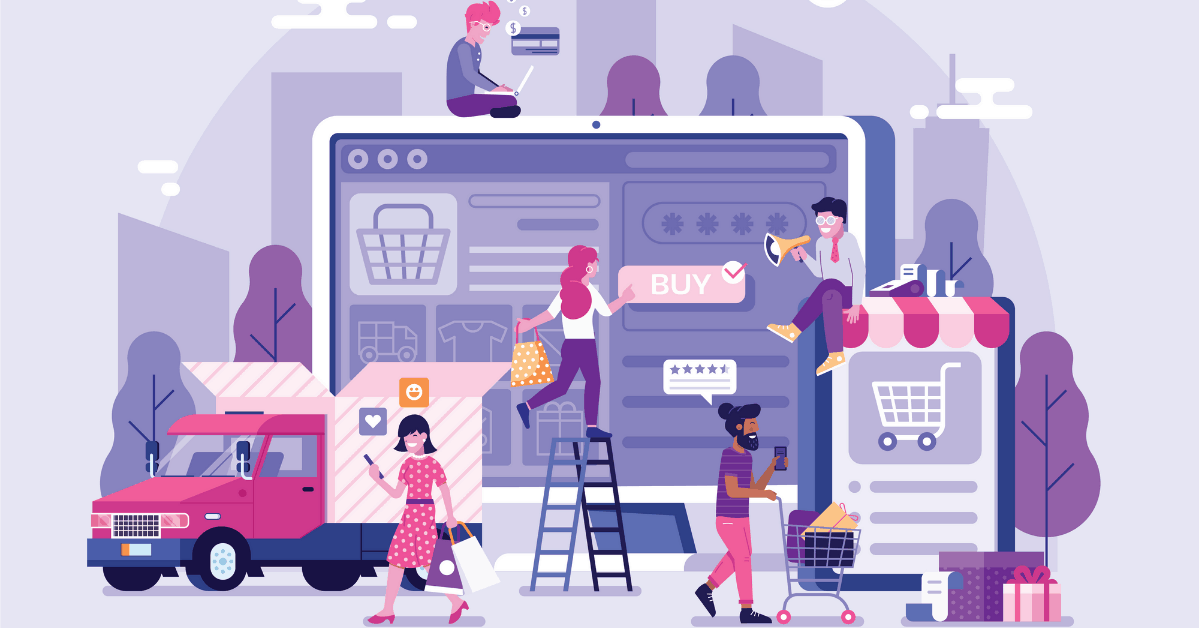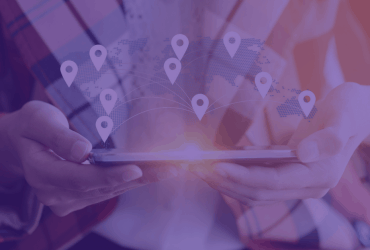No one can deny it, the retail industry is extremely competitive. In the recent news, we have seen well-established retailers such as Target, Sears and HMV tumble against the ever-growing online sellers worldwide. With brick and mortar shops losing the battle against online stores, we may be tempted to think digital platforms are the rising enemy to the retail industry.
There is another reality. Businesses are always looking for an edge to win over customers, improve profits, and stay competitive in the long run. One of the key solutions all kind of retailers are betting on at the moment is edge technology.
Here is how retail companies are building their success thanks to it.
The Retail Industry & Digitization – A Short History
Naturally, digital technology has been part of the retail industry since it first came into existence. The introduction of bar codes and modern POS (point of sale) systems started in the mid-1970s. These systems slowly became widespread in the world of retail, supporting inventory and sales management. For many years, digital systems were not the focus of retailers.
The first major shift came with the web boom of the late 1990s, giving birth to online marketplaces and internet-based retail companies. Companies dumped millions of dollars in the “dot-com bubble” that ended up claiming a lot of the innovative online retailers. The stock market crashed and brought many of these websites down with it.
Some retailers saw this as proof that online stores were doomed to fail and would never overtake the traditional brick-and-mortar store. Other companies, like Amazon, found that the post-dot-com era provided them with the perfect opportunity to expand and try to maximize the niche of online sales.
We know what happened next. Though brick-and-mortar retail sales still outweigh online sales, e-commerce sales have been increasing consistently for more than a decade. Some traditional stores have been unable to cope. Most retailers have integrated online stores as part of their offering, building an “omnichannel” strategy.
A 2018 DigitalCommerce360.com study shows that the e-commerce share of US total retail sales increased from 5.1% to 14.3% over the decade.
Beyond the Online Retail Store: Edge Technology Is Enhancing the In-Store Experience
There is more to the omnichannel perspective. In-store sales are still generating the most revenue for retailers. So, modern retailers are looking for ways to use digital technology to enhance the customer experience in store.
There are more connected devices in use today and retailers are looking to leverage the power of distributed computing to boost their operations. This is what we call “edge technology” as it makes data processing happen “at the edge” of the network where the connected device is or closer to it. It is the most promising feature for retailers at the moment.
Here are a few of the most interesting and potentially revolutionary uses of edge technology in retail.
Better Merchandising and Displays
Retailers are making good use of technologies such as IoT cameras and video processing algorithms, or the tracking of users’ Wi-Fi connections in a store. Applications process the collected information in real time to give store managers a clear understanding of where visitors are spending the most time. This data can either be used immediately to dispatch a salesperson, or analyzed later to adjust the store layout. Ultimately, the store can change its merchandising to make it more appealing and effective. IntuVision is one of the most active companies in this space.
Automated Checkout
Amazon has built its notoriety as the world’s most trusted online store. In 2018, it topped first place in the US while it ranked third on worldwide sales the year before. Unexpectedly, it is also the company that is revisiting the in-store activity.
Amazon is the retailer that famously used a completely automated checkout system for the first time. This system was introduced in the first Amazon Go store in Seattle. Using IoT technology such as RFID (radio frequency identification), smart scanners and video, Amazon Go allows customers to pick their products out and leave the store without stopping at a cash desk. Actually, cash desks do not exist in the store and the customer is automatically billed on their credit card for any purchase when they walk out of the store. It is expected that this sort of “frictionless” experience will become much more common in retail in the future, as edge technology becomes more affordable.
Smart Shelves
Bare or disorganized shelves are a big problem in the retail industry, and can have a negative effect on shoppers. Edge technology like SmartShelf can be used to track the current levels of merchandise on display using RFID and pressure sensors. The system alerts staff members if a shelf needs to be reorganized.
Moreover, the same smart shelves are used for inventory, easing the management of product demand.
Optimized Supply Chain Management
This part of the retail experience is invisible to shoppers, but very important. Retailers want to match the speed and convenience of online shopping within the stores. Both in-store and online sales actually rely on the supply chain. When optimized, the supply chain should help not only ensure consistent stock, but also cut on costs.
Edge technology is again at the center of the revolution in supply chain.
- Smart shelves enable store and warehouse managers to track merchandise levels.
- Procurement teams can order the articles that are most in demand in stores and online.
- Thanks to RFID and GPS sensors, it is easy for the procurement to track shipping.
This list is not exhaustive and the benefit of using more edge technology is a streamlined, efficient supply chain.
As edge technology continues to develop, we are sure to see even more groundbreaking and disruptive applications in retail.
The Benefits of Edge Technology for the Retail Industry
When it comes to the retail industry, IoT offers a number of powerful benefits. Here is a non-exhaustive list.
Enhanced Productivity
Things like “smart shelves,” advanced POS systems, and other such edge tools are very helpful for increasing worker productivity in retail stores. Using the information gathered by edge platforms, workers can direct their attention more efficiently, resulting in a better overall customer experience.
Lower Costs
This is somewhat related to the above point. One of the key ways that brick-and-mortar retailers have cut costs after the rise of online shopping is by having fewer workers on-site. This can result in poor customer experience, unless the company uses edge technology to direct the workers to the areas where they are required and make their jobs easier.
Edge technology can reduce the workload of each worker and will help mitigate the costs of labor, while still providing customers with an excellent experience.
Connected Commerce
True omnichannel commerce is a goal for most retailers with a web presence. Being able to integrate the online and brick-and-mortar shopping experiences is powerful.
Edge technology is instrumental to providing customers with a seamless, customer-centric experience.
The Future of Edge Technology in Retail Is Bright
Using modern edge technology, retailers can streamline their business and gain a competitive edge.
IT departments, managed service providers or any kind of cloud providers need to assist companies in this. Using a modern solution such as Ormuco Edge, they can build and integrate services that leverage edge technology to generate more revenue.
We are here to help you create your solutions. Do not hesitate to contact us now and start your edge technology journey!




